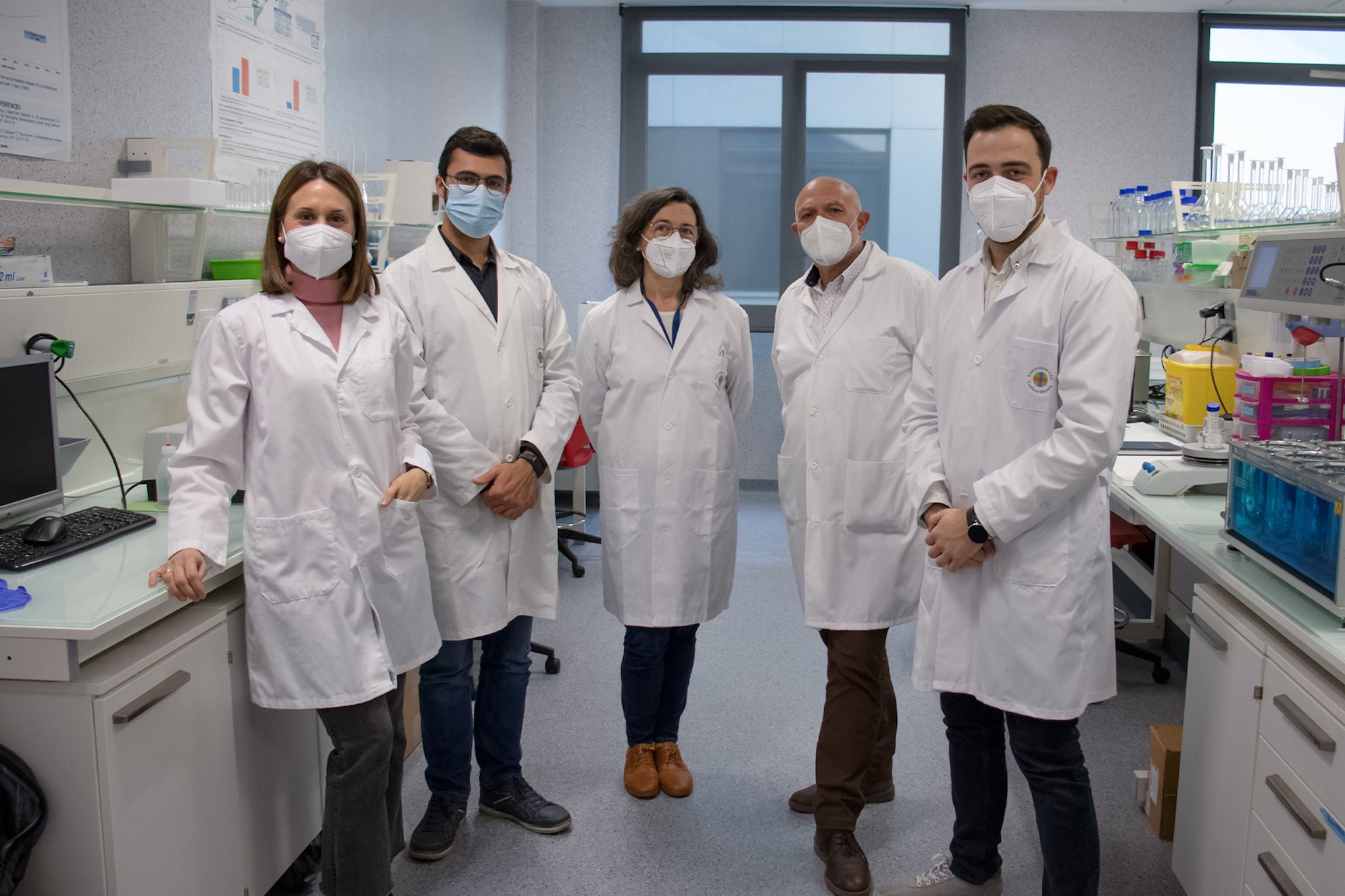Dr Adrián Alambiaga, a member of the Drug Delivery Systems research group at CEU UCH, led by Professor Alicia López Castellano, studied the use of progesterone to treat retinitis pigmentosa for his doctoral thesis. When applied topically to the eye, this hormone can relieve oxidative stress on the retina, potentially slowing the degenerative course of the disease

Retinitis pigmentosa is a degenerative disease affecting the photoreceptor cells in the retina, known as cones and rods. Of genetic origin, this disease first affects vision in low light conditions, and progressively peripheral vision and the central field of vision until total sight loss occurs, as the photoreceptor cells gradually die. Noting recent research into the role of hormones, particularly progesterone, in preventing cell death due to oxidative stress, the CEU UCH Drug Delivery Systems(DDS) research group has successfully developed and tested a range of methods of delivery of this hormone into the eye to slow the degenerative process characteristic of retinitis pigmentosa.
The research undertaken by the team is detailed in Dr Adrián Alambiaga’s doctoral thesis, supervised by Professor Alicia López Castellano and Dr Aracely Calatayud, and which he successfully defended at CEU in April. His findings, already published in several journals, show that progesterone can be delivered in various forms, such as eyedrops, micelles and inserts, in sufficient quantity to penetrate the surface of the eye and reach the neuroretina without causing significant toxicity or irritation. As Dr Adrián Alambiaga told us, “the use of ocular inserts enables progesterone to be delivered in greater quantities than when aqueous solutions are used. Although we saw that aqueous solutions can also permeate the sclera and the cornea, inserts performed best in our tests, as they liberate progesterone for absorption by the neuroretina over a sustained period and in greater quantity.”

Topical administration – the best option
Progesterone is virtually insoluble in water and it only dissolves in gastrointestinal fluids slowly and incompletely. This means that when it is administered orally, it quickly becomes ineffective. In addition, high levels of progesterone need to be administered orally so that just a small amount can reach the eye. “That’s why it was important to study the different ways of administering progesterone topically or locally in the eye, thereby limiting the amount that has to be administered.”
Over the course of his doctoral research, Dr Alambiaga, under the supervision of Prof López Castellano and Dr Calatayud, developed a range of pharmaceutical formulations of progesterone for topical delivery to the eye. These included aqueous solutions, which increase the durability and diffusion of the molecules on the ocular surface, and ocular inserts, which increase the contact time of the drug on the ocular surface, increase drug availability to the body, and enable a controlled release, more precise dosages and less frequent administration.

New treatment strategies
For the group’s lead researcher, Professor Alicia López Castellano, who specialises in pharmaceutical technology at CEU UCH, Dr Alambiaga’s thesis shows that “we have demonstrated for the first time that topical administration of progesterone in the eye is viable. This opens up possible new therapeutic strategies for retinitis pigmentosa patients, and by extension for patients with other eye conditions in which oxidative stress is a risk factor, such as glaucoma, age-related macular degeneration, macular oedema due to retinal vein occlusion, cytomegalovirus retinitis, posterior uveitis and diabetic retinopathy.”
Parts of Dr Adrián Alambiaga’s thesis have been published as research articles in journals such as Pharmaceutics, the Journal of Pharmaceuticals and Biomedical Analysis, and the International Journal of Pharmaceutics.
These articles are available here:
Alambiaga-Caravaca AM, Calatayud-Pascual MA, Rodilla V, Concheiro A, López-Castellano A, Alvarez-Lorenzo C. Pharmaceutics. 2020 Jul 26;12(8):702. doi: 10.3390/pharmaceutics12080702.
Alambiaga-Caravaca AM, Domenech-Monsell IM, Sebastián-Morelló M, Miranda M, Balaguer-Fernández C, Calatayud-Pascual A, Rodilla V, López-Castellano A. J Pharm Biomed Anal. 2021 Jan 30;193:113749. doi: 10.1016/j.jpba.2020.113749. Epub 2020 Nov 6.
Alambiaga-Caravaca AM, Domenech-Monsell IM, Sebastián-Morelló M, Calatayud-Pascual MA, Merino V, Rodilla V, López-Castellano A. Int J Pharm. 2021 Sep 5;606:120921. doi: 10.1016/j.ijpharm.2021.120921. Epub 2021 Jul 23.
Alambiaga-Caravaca AM, Cantó A, Rodilla V, Miranda M, López-Castellano A. Pharmaceuticals. 2022 15 (3), 328; https://doi.org/10.3390/ph15030328.







